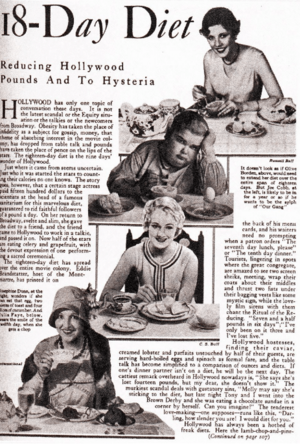Grapefruit diet facts for kids
The Grapefruit diet is a popular short-term eating plan. It is also known as the Hollywood diet or the 18-Day diet. This diet has been around in the United States since the 1930s.
The main idea of the Grapefruit diet is to eat one grapefruit with each meal. People on this diet also eat foods rich in fat and protein, like meat and eggs. Some vegetables are allowed too. However, you should avoid sugar, most other fruits, sweet vegetables, grains, and starchy foods. This makes it a low-carbohydrate diet. A typical breakfast might include bacon and eggs.
The diet claims that grapefruit has a special property, like a "fat-burning enzyme", that helps your body burn fat. The Grapefruit diet does not require you to exercise. It usually lasts for 10 to 12 days, followed by 2 days off.
History of the Grapefruit Diet
The Grapefruit diet first appeared in the 1930s. Before that, in 1929, it was called the "eighteen-day diet." This older version included grapefruit, oranges, toast, vegetables, and eggs. It was a very low-calorie plan, providing about 500 calories each day.
No one knows for sure who invented this diet. One story says that a famous actress named Ethel Barrymore paid two doctors, William James Mayo and his brother, to create a special diet for her. This diet then became very popular in Hollywood. From there, it spread across America. However, the Mayo Clinic, a well-known medical center, has stated that they do not support the Grapefruit diet.
A famous writer named Fannie Hurst was known to follow this diet. The Grapefruit diet became popular again in the 1980s. People then called it the "10-day, 10-pounds-off diet." The idea that grapefruit helps burn body fat has no scientific proof.


